There are several major shipping choke points in the world, including the Panama Canal, Suez Canal, Bab el-Mandeb Strait, Strait of Malacca, Strait of Hormuz, and the Strait of Gibraltar.
Should any of these straits become impassable for an extended period, globalization, inflation and GDP would be adversely affected. In addition, demand for industrial and retail properties could also be negatively impacted.
Maritime piracy and disruption have a long history. For example, piracy was rampant in the Mediterranean Sea in the first half of the first century BCE. Rome set out to render the sea conducive for commerce, and in 67 BCE deployed more than five-hundred ships to defeat the pirates. This was accomplished in just three months and culminated in the capture of the pirate’s stronghold in Cilicia.
In the eighteenth century CE, and the beginning of the nineteenth century, state-supported piracy, extortion, and the enslavement of crews in the Mediterranean Sea was not unusual. The US fought two separate wars with Tripoli (1801–1805) and Algiers (1815–1816) to provide safe passage for US ships.1
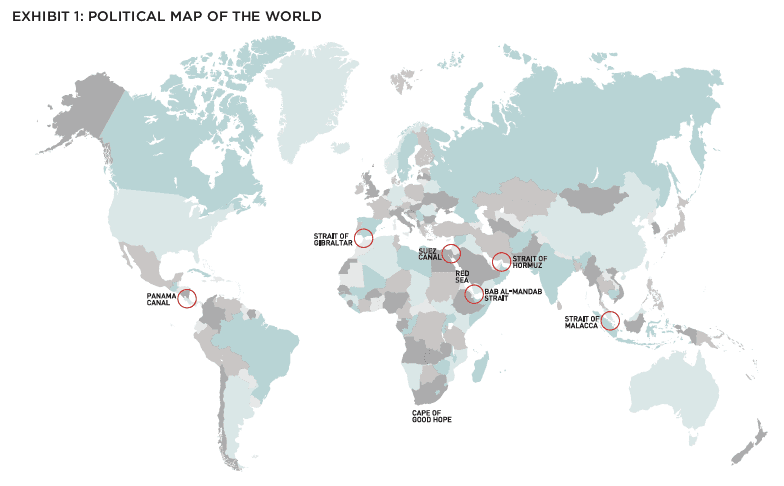
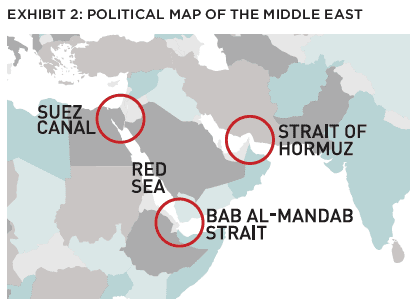
Piracy and attacks along international trade routes have persisted throughout history and the twenty-first century is no exception. Most recently, attacks against ships in the Red Sea in 2023 and into 2024 have disrupted global trade.2 Ships traveling through the Red Sea carry about 40% of the goods that are traded between Asia and Europe.3 The Suez Canal and Bab el-Mandeb Strait—the choke points at both openings to the Red Sea—have experienced significant disruption, as the Red Sea route is being subject to attacks by the Iran-backed Houthi terrorist group.
Not surprisingly, daily freight capacity through the Red Sea has declined. According to the International Monetary Fund, maritime traffic as measured by volume, through the Suez Canal is down 54% so far in 2024 from a year ago (Exhibit 3). The number of transits through the canal has declined 43% year to date (Exhibit 4).
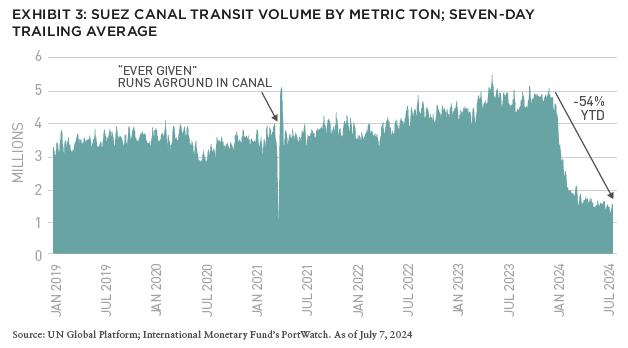
Ships that continue to sail through the Red Sea endure higher insurance, labor, and security costs. Ships that avoid the route altogether and instead travel via the Cape of Good Hope (CGH) also pay substantially higher costs in time and money. Major international shipping companies, including Moller-Maersk of Denmark and Hapag-Lloyd of Germany, have rerouted container ships around the CGH, resulting in an additional week or more in transit times. Oxford Economics estimates that a ship traveling at 16.5 knots from Taiwan to the Netherlands via the Red Sea and the Suez Canal takes about 25.5 days to complete the journey. But this rises to about 34 days if the journey is diverted around the Cape.4
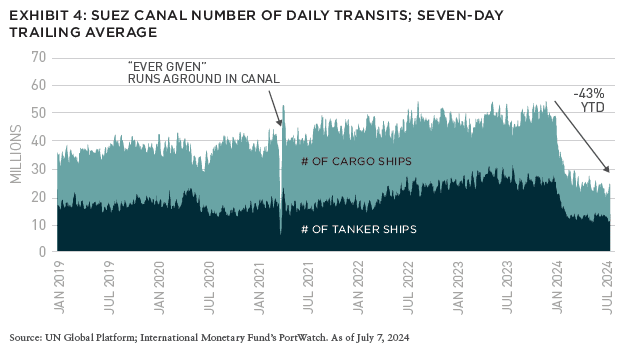
It’s axiomatic that additional travel time increases costs for Asia-Europe trips, but perhaps less intuitive is that it indirectly raises costs on all international shipping, since the added time reallocates ships away from other routes. Shipping costs increased substantially during COVID and then receded as COVID’s effects ebbed. But recently, with the terrorist attacks on Red Sea shipping, costs have risen again. According to Drewry Shipping Consultants, the average worldwide cost to ship a forty-foot container increased 253% between the end 2023 and the week ending July 4, 2024. Many companies are paying surcharges of 20% or more to account for higher fuel and insurance costs, even if they are protected from outright increases due to long-term contracts.
OTHER GLOBAL CHOKE POINTS AT RISK

While the Red Sea has been the major focus of recent maritime disruption, other global choke points are not free from risk. Should Iran decide to widen the regional conflict, it could attack ships carrying oil from Kuwait, Bahrain, and the UAE through the Strait of Hormuz. In the past, Iran has threatened to close the Strait of Hormuz to international shipping.5 Should Iran be successful in carrying out such a threat, the price of oil would likely skyrocket. Between 40% to nearly half of the world’s oil exports pass through the strait.6
In southeast Asia, the Strait of Malacca has also been subject to heightened pirate activity.7
In the western hemisphere, plentiful water is necessary for a properly functioning Panama Canal. Currently, the Canal Zone is suffering from a drought which has substantially lowered capacity in the form of ship size restrictions and fewer passages. Recent conditions have resulted in traffic being reduced to two-thirds of pre-drought capacity.
In the aggregate, the results of these blockages may lead to further deglobalization, higher energy prices, and more expensive imports. All the above are tailwinds for inflation, while less exports would have a negative impact on GDP.
MORE DEGLOBALIZATION
Globalization, already under stress prior to the pandemic, has suffered mid- to longer-term damage from COVID, the Russian invasion of Ukraine, and attacks by the Houthis against global shipping in the Red Sea. Meanwhile, the US is seeking to reduce its reliance on China and other countries for critical supplies including semiconductor chips, active pharmaceutical ingredients, generic medicines, and personal protective equipment. This trend will likely be accelerated by geopolitics, national security considerations, and labor shortages.
In the wake of the terror attacks perpetuated against Israel on October 7, 2023, war broke out between Israel and Hamas. Other regional proxies and beneficiaries of Iran have joined the war at varying degrees of engagement and, in addition, have attacked US positions resulting in the deaths of US troops. There is the potential for the conflict to expand more broadly which could potentially have a very negative impact on the global economy.
The blockages at the Suez Canal and the Panama Canal result in less trade and more products being manufactured domestically or in neighboring countries – which means more deglobalization.
A NEGATIVE IMPACT ON GDP
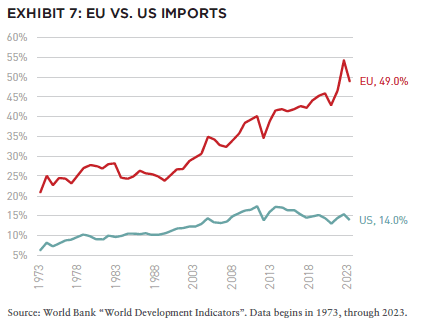
The Suez Canal (opened 1869) and the Panama Canal (1914) were built to facilitate world trade by substantially shortening shipping routes. If trade is rerouted away from global choke points and gets more expensive (i.e., higher costs for labor, ship rental, fuel, and insurance), global GDP will be negatively impacted.
Europe is far more reliant on exports as a positive contribution to GDP than is the US Exports constitute 52.7% of EU GDP compared to just 11.1% of US GDP. Net exports (exports minus imports), which is the way trade is computed as a contribution to GDP, was +3.7% in the EU, meaning exports exceed imports, compared to -2.9% in the US, where imports exceed exports. The global choke point most exposed now is the Suez Canal-Red Sea-Bab el-Mandeb route, which is the fastest way to move goods between trading partners in Asia and Europe.
In addition, the cost to Egypt and Panama, the host countries of the canals, is not inconsequential. Egyptian Finance Minister Mohamed Maait revealed projections that Suez Canal revenues would decline around 60% due the Red Sea crisis.8 The Panama Canal Authority (ACP) announced that they expect to post a $600 million to $800 million decline in revenue.9
A TAILWIND TO INFLATION
Iran-backed Houthi terrorist attacks on cargo ships in the Red Sea have resulted in higher costs as major shipping companies reroute around the CGH for travel between Asia and Europe. As noted, the cost of shipping via the CGH requires higher labor, ship rental, fuel, and insurance costs. Those that chance a passage via the Red Sea endure higher insurance, labor, and security costs, as well as the risk of losing their ship and having sailors taken hostage.
The Organisation for Economic Co-operation and Development (OECD), representing thirty-seven countries including the US, stated on February 5, 2024, that an escalation in attacks “could result in renewed price pressures” and jeopardize what has now been two years of resilience in the global economy.10 According to the OECD, a doubling in shipping costs would add 0.4 percentage points to consumer inflation for OECD countries after about a year.11
The impact of higher import costs and the resultant higher inflation would also impact Europe more than the US because imports constitute 49% of EU GDP versus 14.0% for the US. International insurance company Allianz Trade contends that “a doubling of freight costs sustained for more than three months could push the eurozone’s inflation rate up by three-quarters of a percentage point and reduce economic growth by almost a percentage point.”12
Should Iran decide to widen the regional conflict by attacking ships carrying oil from Kuwait, Bahrain, or the UAE through the Strait of Hormuz, the price of oil could skyrocket, creating substantial inflationary pressure.
CRE DEMAND: LOGISTICS, RETAIL
The Red Sea conflict may weaken goods consumption and potentially force retail sales lower in the near term, which could cause a disruption in logistics and retail space demand. Should prices rise to account for higher shipping costs, sales would likely decline and result in less demand for logistics and retail space. To the extent that international shipping blockages contribute to deglobalization, US manufacturing facilities would potentially benefit.
Recent drought conditions in Panama, resulting in the canal functioning at only two-thirds capacity, render US Pacific ports more attractive. The widening of the Panama Canal to allow Panamax ships to navigate the isthmus resulted in more twenty-foot equivalent (TEU) containers shipped via Gulf and Atlantic ports. However, Gulf and Atlantic Port markets could potentially be negatively impacted if disruptions were to continue for a significant period.
NEW: SUMMIT #16
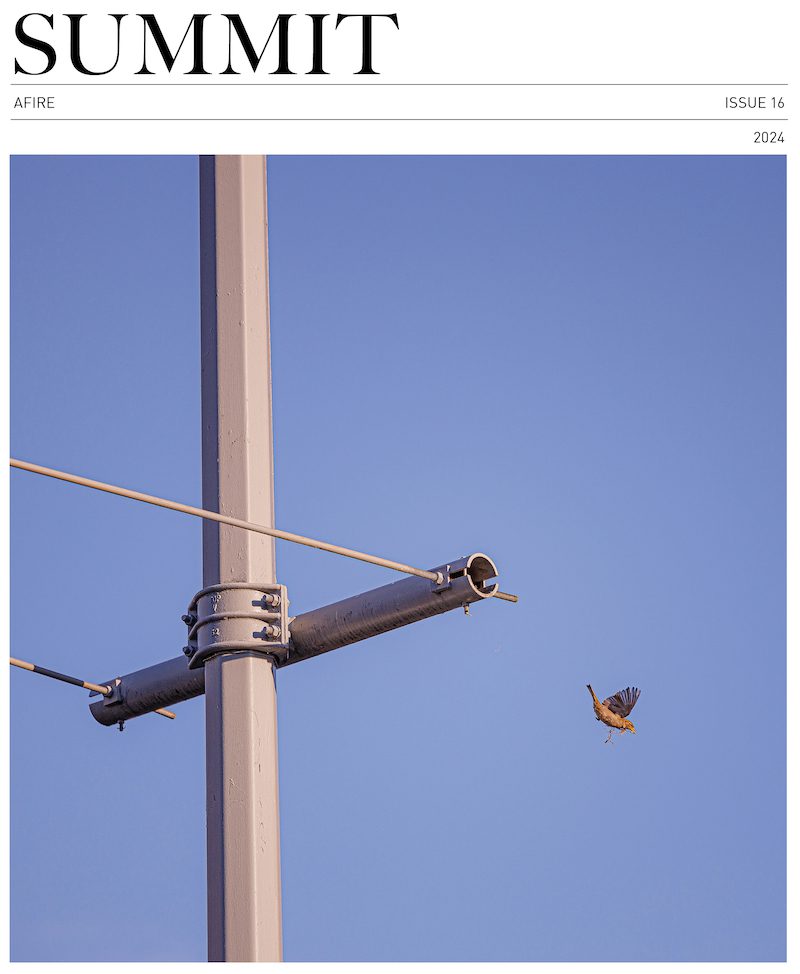
NOTE FROM THE EDITOR: ISSUE #16
Benjamin van Loon, CAE | AFIRE
GLOBAL CONSUMPTION: APAC DATA CENTER INVESTMENT STRATEGIES IN THE AGE OF DIGITIZATION
Michelle Lee, Eugene Seo, and Wayne Teo | CapitaLand Investment
DISTINCT VERTICALS: AI IS CHANGING THE REAL ESTATE INDUSTRY ON TWO DISTINCT PATHS
Daniel Carr and Andrew Peng | Alpaca Real Estate
DIVERGING FORTUNES: ARE COMPARISONS BETWEEN OFFICE AND RETAIL STILL WARRANTED?
Brian Biggs, CFA and Ashton Sein | Grosvenor
OCCUPYING FORCE: INSTITUTIONAL OFFICE PROPERTIES FEELING THE PAIN
Nolan Eyre, Scot Bommarito, and William Maher | RCLCO Fund Advisors
VALUE-ADD VS. CORE: COMPARING CORE AND NON-CORE STRATEGIES WITH NEW DATA
Yizhuo (Wilson) Ding | Related Midwest and Jacques Gordon, PhD | MIT Center for Real Estate
FAVORABLE CONDITIONS: STRUCTURAL CHANGES TO THE MARKET FAVOR NONBANK CRE LENDERS
Mark Fitzgerald, CFA, CAIA, and Jeff Fastov | Affinius Capital
INFRASTRUCTURE VIEWPOINT: INTEREST RATE CHANGES COULD UNLOCK NEW INFRASTRUCTURE INVESTMENTS
Tania Tsoneva | CBRE Investment Management
MISSING MIDDLE: WORKFORCE AND AFFORDABLE HOUSING IN THE US
Jack Robinson, PhD and Morgan Zollinger | Bridge Investment Group
NARROW SPACES: CHOKED STRAITS AND IMPLICATIONS FOR GDP, INFLATION, AND CRE
Stewart Rubin and Dakota Firenze | New York Life Real Estate Investors
OPCO-PROPCO OPPORTUNITY: EMERGING MODELS AND THE KEYS TO STRUCTURING PARTNERSHIPS
Paul Stanton | PTB and Donal Warde | TF Cornerstone
TRANSFORMING LUXURY: UNLOCKING VALUE IN LUXURY HOSPITALITY REAL ESTATE
Alia Peragallo | Beach Enclave and AFIRE Mentorship Fellow, 2024
SOLAR VALUATION: IS SOLAR ENERGY A VALUATION GAME-CHANGER?
David Wei and Michael Conway | SolarKal
GROUND LEVEL: THE CASE FOR GROUND LEASES AND LONG-TERM CAPITAL
Shaun Libou | Raymond James
LEGAL UPDATE / DRIVING FORCE: UNDERSTANDING SYNDICATED LOANS AND MULTI-TIERED FINANCING
Gary A. Goodman, Gregory Fennell, and Jon E. Linder | Dentons
LEGAL UPDATE / ENHANCED PROTECTION: LEVERAGING THE SAFETY ACT FOR ENHANCED LIABILITY PROTECTION IN REAL ESTATE
Andrew J. Weiner, Brian E. Finch, Aimee P. Ghosh, Samantha Sharma, and Sarah Hartman | Pillsbury
+ EDITOR’S NOTE
+ ALL ARTICLES
+ PAST ISSUES
+ LEADERSHIP
+ POLICIES
+ GUIDELINES
+ MEDIA KIT
+ CONTACT

CHANGES COMING STRAITS AND NARROWS
Several of the world’s major shipping choke points are challenged. The Bab el-Mandeb Strait (and effectively the Suez Canal) is threatened by terrorism and the Panama Canal is experiencing drought conditions negatively impacting shipping traffic. Should Iran close the Strait of Hormuz, major oil producers will have great difficulty shipping their primary export. The potential result of these blockages or potential blockages is more deglobalization, higher energy prices, more expensive imports—both a tailwind to inflation, and a drag on GDP.
—
NOTES
1. “Milestones in the History of U.S. Foreign Relations – Office of the Historian,” n.d. https://history.state.gov/milestones/1801-1829/barbary-wars.
2. Before 2023, the most recent disruption was logistical: the ship “Ever Given” became wedged across the waterway blocking canal traffic for six days in March 2021.
3. Hannon, Paul, and William Boston. “The Red Sea Conflict Is Scrambling Shipping. Europe Is Bearing the Brunt.” Wall Street Journal, January 19, 2024. https://www.wsj.com/world/europe/the-red-sea-conflict-is-scrambling-shipping-europe-is-bearing-the-brunt-a0aac0e3.
4. “Red Sea Shipping Attacks Add to Inflation Risks,” n.d. https://www.oxfordeconomics.com/wp-content/uploads/2024/01/20240104-RB-Global-Shipping.pdf.
5. Lahabi, Omid. “Strait of Hormuz: Why Does Iran Threaten to Close It?” Euronews, June 28, 2019. https://www.euronews.com/2019/06/28/strait-of-hormuz-why-does-iran-threaten-to-close-it.
6. Lahabi, Omid. “Strait of Hormuz: Why Does Iran Threaten to Close It?” Euronews, June 28, 2019. https://www.euronews.com/2019/06/28/strait-of-hormuz-why-does-iran-threaten-to-close-it.
7. Hellenic Shipping News. “New IMB Report Reveals Concerning Rise in Maritime Piracy Incidents in 2023 | Hellenic Shipping News Worldwide,” n.d. https://www.hellenicshippingnews.com/new-imb-report-reveals-concerning-rise-in-maritime-piracy-incidents-in-2023/.
8. EgyptToday. “Suez Canal Revenues to Decline by 60% Amid Regional Tensions,” May 20, 2024. https://www.egypttoday.com/Article/3/132413/Suez-Canal-revenues-to-decline-by-60-amid-regional-tensions.
9. Wirtz, Nic. “Panama: Crisis in the Canal.” Global Finance Magazine, February 1, 2024. https://gfmag.com/economics-policy-regulation/panama-canal-crisis.
10. OECD. “Economic Outlook: Steady Global Growth Expected for 2024 and 2025,” May 2, 2024. https://www.oecd.org/en/about/news/press-releases/2024/05/economic-outlook-steady-global-growth-expected-for-2024-and-2025.html.
11. OECD. “Economic Outlook: Steady Global Growth Expected for 2024 and 2025,” May 2, 2024. https://www.oecd.org/en/about/news/press-releases/2024/05/economic-outlook-steady-global-growth-expected-for-2024-and-2025.html.
12. Hannon, Paul, and William Boston. “The Red Sea Conflict Is Scrambling Shipping. Europe Is Bearing the Brunt.” Wall Street Journal, January 19, 2024. https://www.wsj.com/world/europe/the-red-sea-conflict-is-scrambling-shipping-europe-is-bearing-the-brunt-a0aac0e3.
DISCLAIMER: The information presented has been prepared by Real Estate Investors for informational purposes only and sets forth our views as of this date. The underlying assumptions and our views are subject to change. This does not constitute investment advice and should not be used as a basis for any investment decision. There is no guarantee that market expectations will be achieved. The information presented herein was obtained from various sources and is subject to change without notice as market and economic conditions change. Any forward looking statements are based on a number of assumptions concerning future events and although we believe the sources used are reliable, the information contained in these materials has not been independently verified and its accuracy in not guaranteed The charts and graphs provided herein are for illustrative purposes only to assist readers in understanding economic trends and conditions but must not be used, or relied upon, to make investment decisions. Real Estate Investors is an investment group within NYL Investors LLC. NYL Investors LLC (“NYL Investors”) is a direct wholly-owned subsidiary of New York Life Insurance Company. NYL Investors is comprised of the following investment groups: (i) Fixed Income Investors, (ii) Private Capital Investors and (iii) Real Estate Investors. NYL Investors is not registered in every jurisdiction and their products or services of are not available, and materials relating to them will not be distributed, to any person domiciled in any jurisdiction or region where such distribution would be contrary to local law or regulation. NYL Investors affiliates may develop and publish research that is independent of, and different than, the views expressed. “New York Life Investments” is both a service mark, and the common trade name, of certain investment advisors affiliated with New York Life Insurance Company. New York Life Insurance.
—
ABOUT THE AUTHORS
Tania Tsoneva is Head of Infrastructure Research for CBRE Investment Management.
—
THIS ISSUE OF SUMMIT JOURNAL IS GENEROUSLY SPONSORED BY
Leverage the only investment management suite that automates complex processes and ensures transparency from investor to asset operations, integrating investment and debt management, capital raising, investment, financial, and operational metrics through a branded investor portal. Learn more.

